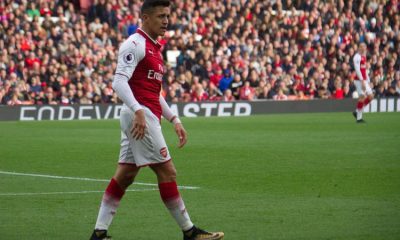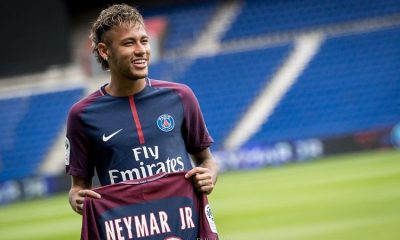
Barcelona FC’s slogan is “More Than a Club” for a reason.
Politics and football don’t often mix, but in Barcelona they have been intertwined for decades. Barcelona FC haslong since turnedintoa symbol forthe rights and freedom ofthe Catalonian people as awayto propagate the independence ofthe region.
The heavy burden of such a badge of honour has fallen on the players and managers. On many occasions it has given them impetus to ascend Barcelona to the top of world football.
Here are the 10 Sides in Barcelona’s history that succeeded:
10. Cesar Menotti transition to Terry Venables, 1982-85
The period coincided with Diego Maradona’s stint at Barcelona. The world’s best player didn’t spend the best of times there.
He joined in 1982 for a record fee but contracted hepatitis soon after and was ruled out for three months. Upon his return Andoni Goikoetxea broke his leg in a horror tackle.
Then he caused an iconic mass brawl when he tried to exact his revenge on Goikoetxea. He left in 1984 for Napoli but not before donning three medals in 1983.
After Venables took the reigns as manager, midfielder Bernd Schuster rose to the occasion and in 1985, Barca won their first Spanish League title in 11 years. The Spanish League cup followed again two years later.
Venables also took the club to its second European Cup final ever, but lost after shambolic penalty-taking against Romanian side Steaua Bucuresti.
9. Bobby Robson’s Golden Touch, 1996-1997
Bobby Robson helped to uncover two of football’s best gems: Ronaldo and Jose Mourinho. He had made his acquaintance with assistant Mourinho at Porto who he led to two Premier Division titles, and he knew about Ronaldo’s talents from his time at PSV Eindhoven.
Although brought in as a temporary solution, Robson’s tactical genius and presence of a brilliant squad, among which the Brazilian Ronaldo, embellished this period with success.
The Catalans snatched the Spanish Supercup and Copa Del Rey in 1996 and the European Cup Winners cup the following year.
8. The Laszlo Kubala Influence, Part Two, 1951-61
While a certain overweight and short Hungarian technician orchestrated Real Madrid in the late 1950s, four of his compatriots were running amok on the other side of the divide, Barcelona. Under manager Ferdinand Daucik, Laszlo Kubala lifted the club to unseen heights.
In his first season, Kubala scored 26 goals in 19 games, scoring seven in one match. Barcelona gulped an astounding five medals this season—one of the club’s most successful seasons ever.
In 1958, Kubala called on for the help of two of his compatriots, Hungarian refugees, Luis Suarez and Evaristo. The three would form Barcelona’s nucleus that ruled the remaining of the 50s.
The Catalans cruised to another double in 1959 and yet again the Spanish League and Inter-Cities Fair Cup in 1960.
When Barcelona appointed Helenio Herrera, Kubala spent more time on the bench. Without him Barcelona underwent a string of bad results which led to the sacking of Herrera.
The next manager restored Kubala for the first team and Barcelona became the first club to beat a galactic Real Madrid in the European Cup.
By then his age had began to tell and the Kubala’s era ended soon after. The Hungarians brought eight trophies to Barcelona.
7. Louis Van Gaal’s Side, 1997-2000
The Dutch colonization of Barcelona began when Luis van Gaal took the reins in 1997.
One by one the Ajax stars that had taken over the world a year earlier rejoined him at Barcelona: Frank and Ronald De Boer Reiziger, Patrick Kluivert, Philip Cocu, Jari Litmanen, and Boedewijn Zenden.
Despite success on the pitch, winning the La Liga twice and the Copa Del Rey in his first two seasons, Barcelona’s failure to make a stamp in Europe, the fans had gotten sick of van Gaal’s tyrannical reliance on structure which stripped their club of its characteristic beauty.
For them football was about fluidity, and Van Gaal’s style was a bit too cold for the warm Catalonia.
Backed by the vocal fans even the stars of the club dared to stand up to the manager as mutiny loomed just round the corner.
When the inescapable happened, Van Gaal blurted ‘Friends of the press, I am leaving. Congratulations.’
Despite Van Gaal’s failure to endear himself to the fans and players he succeeded in laying the roots for young players like Xavi Hernandez, Victor Valdes and Carles Puyol.
6. Rinus Michels’ Side, 1973-78
Rinus Michels had masterminded the dominance of the Netherlands side of the 1974 and Ajax’s European Cup takeover a few years before he took the reins of Barcelona.
Michels formula for success was total football plus Cruyff. Cruyff ran around freely while players like Juan Manuel Asensi, Carles Recach and Hugo Sotil adjusted their positions accordingly. This formula drove Barcelona to their first title in 13 years.
Although the side failed to emulate the great Ajax the late 60s and won only two trophies under Michels, he left a legacy that would last for over two decades by establishing the Dutch connection at Barcelona and laying the foundations for tiki-taka football.
5. Frank Rijkaard’s Side, 2003-2006
When Rijkard arrived, the club had gone through a change in administration: Joan Laporta had seized control from Joan Gaspart.
The new president focused on reviving the glory of past years and gave Rijkaard the green light to apply his ideas to the squad.
Changes were slow to take effect. Rijkaard took a year to spot hidden unpolished gems like Iniesta, Xavi and Puyol in his inherited team. He also signed a smiley Brazilian with protruding teeth, Ronaldinho. The full Rijkaard effect was felt in the second year when he gave Ronaldinho a more central role and put Iniesta and Xavi in the supporting roles.
It worked like a charm. He won two back-to-back La Liga titles, the Spanish Cup and the Champions League all the while playing attacking and fluid football.
In his remaining years as manager Rijkaard failed to win anything else but laid the grounds for an emerging Lionel Messi.
4. The 1944-49 Barcelona and the fascist regime
The Second World War had just ended when Spain fell under the dictatorship of fascist regime of Francisco Franco. Football didn’t pass unscathed as it slowly turned into a tool for government propaganda.
When in 1943, Barcelona thrashed Real Madrid 3-0 in the Copa del Generalisimo, Franco’s head of state visited to remind them they were gracing the pitch only due to the ‘generosity of the regime.’
Real won the second leg 11-1.
Despite the political pressure, Barca snatched three titles from 1945 to 49, inspiring a whole region with their refusal to bow their heads.
3. The 1920s, the First Golden Age
In the 1920s Barcelona underwent a period of self-discovery. It was around that time when the Catalan people began to feel the club as their representation on the green pitch.
Manager Jack Greenwell was the one who laid the foundation for success on the field.
Barcelona undisputed stars then were Paulino Alcantara and Josep Samitier – the second and third all-time top goal-scorers.
With the help of a stellar squad boasting Ricardo Zamora, Emilio Sagi, Felix Sesumaga and Franz Platko, Barcelona ruled for many years.
They won the Spanish Cup six times, the Catalan Championship five times and brought the club their first Spanish League title in 1929.
2. Johan Cruyff’s Dream Team, 1988-1996
In 1988, Barcelona’s board of directors saw no better man than Johan Cruyff to pull the club out of its muddy trophy-less mess.
Weak opinions and a poly-belief system were never part of Cruyff’s DNA. So when he became a manager, he applied the same strong-hand philosophy but what hid behind it was the fluidity of tiki-taka football.
Cruyff blended home-grown and proven international players nicely.
Josep Guardiola, Albert Ferrer, Txiki Begiristain, Hristo Stoichkov, Romario, Michael Laudrup and Ronald Koeman seized their fortune to gain the status of club heroes.
The side, which later was branded ‘Dream Team’, reaped its most successful period between 1990 and 1994: four consecutive La Liga titles, four European conquests and a Copa Del Rey.
Eleven trophies in total stretched over the eight-year period of Cruyff’s Barcelona tenure.
But it was Cruyff’s legacy of tiki-taka that jumpstarted three decades where Barcelona dominated world football regularly. Cruyff was the main reason for core changes in Barcelona La Maisa school- changes which revolved around teaching students the tenets of possession football. La Maisa has kept this structure to date.
1. Pep Guardiola’s Side, 2008-2012
If the 20s were golden for Barcelona, 2008 alone was platinum.
It was Guardiola’s first year as a manager. His trophy hunger as a player translated into a no nonsense approach as a manager. He had no qualms in unloading the club stars Ronaldinho, Sammuel Eto’o and Deco. His opinions widely diverged from the previous manager’s Rijkaard and made sure everybody knew it.
He brought in Daniel Alves, Seudou Keita, and Gerrard Pique and promoted youngsters Sergio Busquets and Pedro Rodriguez.
By then Messi had alighted the world with his dribbling adroitness and Pep was greedily rubbing his hands at the prospect of building a team around him.
With his own version of Rinus Michel’s ‘tiki-taka’, Guardiola placed Xavi and Iniesta in the supporting positions. What followed was the club’s biggest success story in history.
The Catalans played football out of Playstation, virtually and bloodlessly beheading everyone they faced on their way to their first sixdruple in history.
Johan Cruyff might have stirred in his sleep: Maybe the disciple was better than the master?
Guardiola racked an amazing 14 trophies during his four year tenure and transformed Barcelona into the most feared and formidable club in the world.
Author


The Football Coach
How To Win Football Bets: A Betting Strategy To Help You Win Every Time

The Football Coach
How long is a football pitch? The complete pitch size guide















